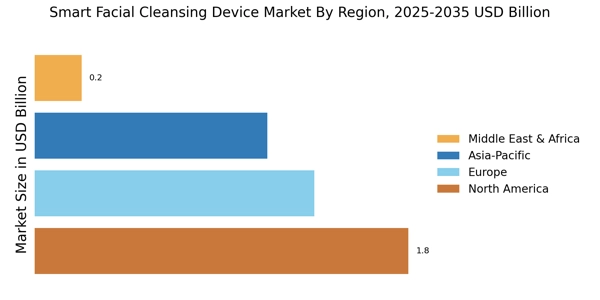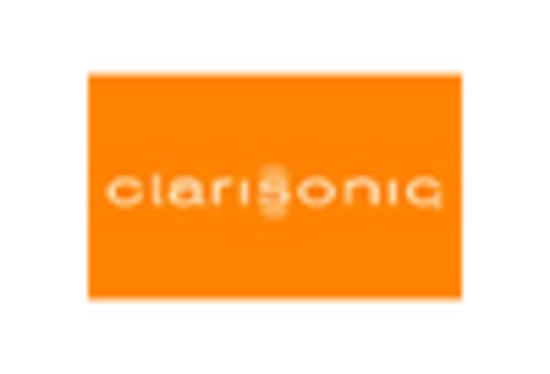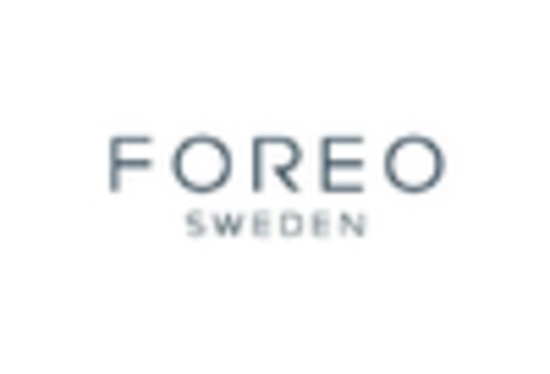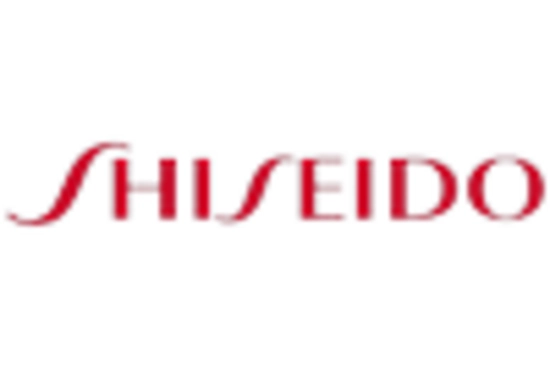The Smart Facial Cleansing Device Market is currently characterized by a dynamic competitive landscape, driven by innovation, consumer demand for personalized skincare, and the integration of advanced technologies. Key players such as Foreo (SE), Philips (NL), and L'Oreal (FR) are at the forefront, each adopting distinct strategies to enhance their market presence. Foreo (SE) focuses on continuous product innovation, frequently launching new devices that incorporate cutting-edge technology, while Philips (NL) emphasizes its commitment to sustainability, integrating eco-friendly materials into its product lines. L'Oreal (FR), on the other hand, leverages its extensive research capabilities to develop products that cater to diverse skin types, thereby broadening its consumer base. Collectively, these strategies contribute to a competitive environment that is increasingly centered around technological advancement and consumer-centric offerings.
In terms of business tactics, companies are increasingly localizing manufacturing to reduce costs and enhance supply chain efficiency. This approach not only mitigates risks associated with The Smart Facial Cleansing Device demands. The Smart Facial Cleansing Device Market appears moderately fragmented, with several key players vying for market share. The collective influence of these companies shapes a landscape where innovation and consumer engagement are paramount, fostering a competitive atmosphere that encourages continuous improvement and differentiation.
In August 2025, Foreo (SE) launched its latest device, the Luna 4, which features AI-driven skin analysis technology. This strategic move is significant as it positions Foreo (SE) as a leader in the integration of artificial intelligence within skincare, potentially attracting tech-savvy consumers who seek personalized skincare solutions. The introduction of such advanced features may enhance user experience and loyalty, thereby solidifying Foreo's market position.
In September 2025, Philips (NL) announced a partnership with a leading skincare brand to co-develop a line of smart cleansing devices tailored for sensitive skin. This collaboration underscores Philips' strategy to expand its product offerings while leveraging the expertise of established skincare brands. By aligning with a reputable partner, Philips (NL) not only enhances its credibility but also taps into a new consumer segment, which could lead to increased market penetration.
In October 2025, L'Oreal (FR) unveiled a new sustainability initiative aimed at reducing the carbon footprint of its facial cleansing devices. This initiative reflects a growing trend among consumers who prioritize environmentally friendly products. By committing to sustainable practices, L'Oreal (FR) not only addresses consumer concerns but also positions itself as a responsible leader in the beauty industry, potentially attracting a broader audience.
As of October 2025, the competitive trends within the Smart Facial Cleansing Device Market are increasingly defined by digitalization, sustainability, and the integration of artificial intelligence. Strategic alliances are becoming more prevalent, as companies recognize the value of collaboration in enhancing product offerings and market reach. Looking ahead, competitive differentiation is likely to evolve from traditional price-based competition to a focus on innovation, technological advancements, and supply chain reliability. This shift suggests that companies that prioritize these aspects will be better positioned to thrive in an increasingly competitive landscape.


















Leave a Comment